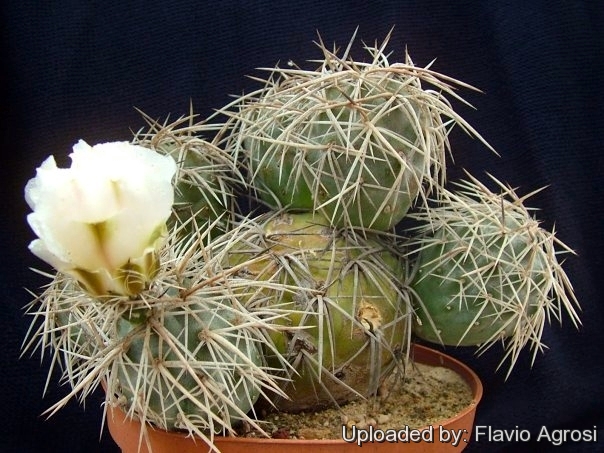
Tephrocactus alexanderi Photo by: Flavio Agrosi
Geographical form from Talampaya la Rioja (Argentina). Collection Paladini Raimondo.
Origin and Habitat: It is found in the provinces of La Rioja and Salta, Argentina.
Habitat: This species grows and blooms in a very dry environment on rocky soil, where few other plants can survive.
Synonyms:
See all synonyms of Tephrocactus alexanderi
back
Accepted name in llifle Database:Tephrocactus alexanderi (Britton & Rose) Backeb.Cactus (Paris) no. 38: 250. 1953Synonymy: 18
back
Common Names include:
SPANISH (Español): Bola de Indio
Description: Tephrocactus alexanderiSN|22328]]SN|22328]] is a small low depressed or erect succulent plant with some spherical branches forming spiny cushions.
Stem (segments): 2,5-5 cm long, 2 to 3 cm thick, globose, egg-shaped or shortly cylindrical, greyish green tuberculate, covered with spines and readily detached.
Areoles: Small, round, closely set 30-60 or more per segment and extending to base, most with spines.
Spines: 4 to 15, up to 4 cm long, white below, dark above or with black tips, fading to dull grey as the stems age, scurfy-pubescent even in age, straight, erect or pointing downward, more or less flexible, spreading, interlocking mostly thin a few stout.
Flowers: Large pinkish-white. Pericarpels bristly above.
Fruit: Dry, thin walled, red, obovoid, 2 cm. long, not spiny, but upper areoles bearing 2 to 8 long, white, erect, fine bristles to 1 cm overtopping the fruit; umbilicus of fruit depressed.
Seed: White, 5 to 6 mm broad.
Subspecies, varieties, forms and cultivars of plants belonging to the Tephrocactus alexanderi group
 Tephrocactus alexanderi (Britton & Rose) Backeb.: has spherical branches forming spiny cushions. Spines 4 to 15, up to 4 cm long, white with dark tips. Flowers pinkish-white. Distribution: La Rioja and Salta, Argentina.
Tephrocactus alexanderi (Britton & Rose) Backeb.: has spherical branches forming spiny cushions. Spines 4 to 15, up to 4 cm long, white with dark tips. Flowers pinkish-white. Distribution: La Rioja and Salta, Argentina. Tephrocactus alexanderi var. bruchii (Speg.) Backeb.: has roundish joints the size of a tennis ball, dark spreading-spines and beautiful white flowers, sometimes a well-defined pink-blue tint. Distribution: San Juan and La Rioja.
Tephrocactus alexanderi var. bruchii (Speg.) Backeb.: has roundish joints the size of a tennis ball, dark spreading-spines and beautiful white flowers, sometimes a well-defined pink-blue tint. Distribution: San Juan and La Rioja. Tephrocactus halophilus (Speg.) Backeb.: Has more cylindrical joints, and white flowers. Distribution: saltpetre pans of the small valleys of the Sierra Pie de Palo, San Juan, Argentina.
Tephrocactus halophilus (Speg.) Backeb.: Has more cylindrical joints, and white flowers. Distribution: saltpetre pans of the small valleys of the Sierra Pie de Palo, San Juan, Argentina.
Bibliography: Major references and further lectures
1) Edward Anderson “The Cactus family” Timber Press, Incorporated, 2001
2) James Cullen, Sabina G. Knees, H. Suzanne Cubey "The European Garden Flora Flowering Plants: A Manual for the Identification of Plants Cultivated in Europe, Both Out-of-Doors and Under Glass" Cambridge University Press, 11/Aug/2011
3) David R Hunt; Nigel P Taylor; Graham Charles; International Cactaceae Systematics Group. "The New Cactus Lexicon" dh books, 2006
4) Nathaniel Lord Britton, Joseph Nelson Rose “The Cactaceae: Descriptions and Illustrations of Plants of the Cactus Family” Volume 3, 1922
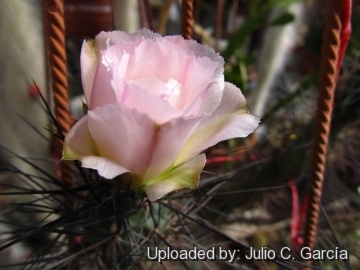 Tephrocactus alexanderi Photo by: Julio C. García
Tephrocactus alexanderi Photo by: Julio C. García Tephrocactus alexanderi Photo by: Valentino Vallicelli
Tephrocactus alexanderi Photo by: Valentino Vallicelli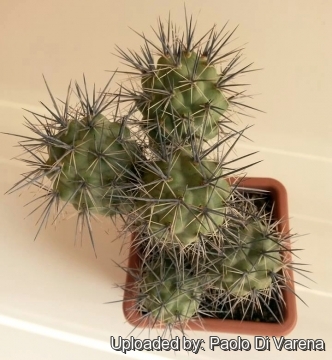 Tephrocactus alexanderi Photo by: Paolo Di Varena
Tephrocactus alexanderi Photo by: Paolo Di Varena Tephrocactus alexanderi Photo by: Julio C. García
Tephrocactus alexanderi Photo by: Julio C. García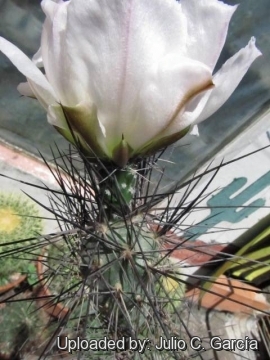 Tephrocactus alexanderi Photo by: Julio C. García
Tephrocactus alexanderi Photo by: Julio C. García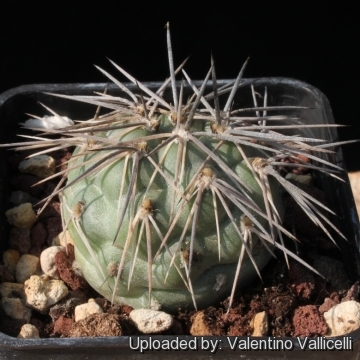 Tephrocactus alexanderi Photo by: Valentino Vallicelli
Tephrocactus alexanderi Photo by: Valentino Vallicelli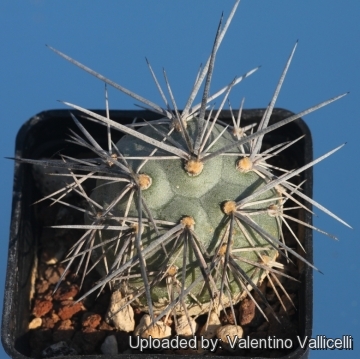 Tephrocactus alexanderi Photo by: Valentino Vallicelli
Tephrocactus alexanderi Photo by: Valentino Vallicelli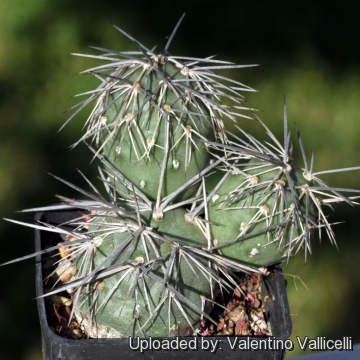 Tephrocactus alexanderi Photo by: Valentino Vallicelli
Tephrocactus alexanderi Photo by: Valentino VallicelliCultivation and Propagation: Tephrocactus alexanderiSN|22328]]SN|22328]] is susceptible to overwatering, but need enough water during the growing season. This mountain cactus - because of the elongated fat taproot - necessitate deep pots and a well drained mineral potting mix. It prefers a full sun exposure, but should be protected from excessive heat and sun in summer.
Frost Tolerance: They tolerate light frost -5 (-10) °C.
Remarks: Need to be kept in a cool place during winter rest this is important for the flowers as well as for their health. Without this cool winter period they normally wont get many buds. Keep dry in winter to avoid rot. Need a sufficient amount of air.
Propagation: Seeds are extremely difficult to germinate. Best reproduced from rooted cuttings. Grafting is often used to speed growth rate and to create a back-up for plants in collection.
Your Photos
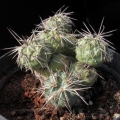
by Valentino Vallicelli




















